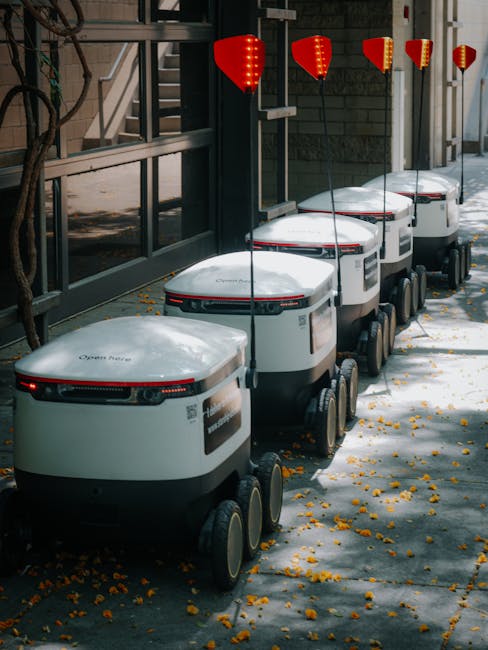Automation in Graphic Design: Bannerbear and n8n Lead the Charge in 2025
The convergence of artificial intelligence and workflow automation is rapidly transforming the graphic design industry in 2025. Two platforms, Bannerbear and n8n, are at the forefront of this revolution, offering streamlined solutions for businesses seeking to automate design processes and boost efficiency. This report analyzes their impact and the broader implications for the design sector.
Bannerbear: Streamlining Image Creation and Customization
Bannerbear’s API-driven platform allows businesses to automate the creation of various marketing materials, including banners, social media posts, and email headers. Its user-friendly interface and powerful automation capabilities have become increasingly popular among marketing teams and design agencies seeking to improve turnaround times and reduce manual workload. This year has seen a significant surge in its adoption across diverse sectors.
Scalability and Customization
The platform’s scalability is a key advantage. Bannerbear can easily handle large volumes of design requests, making it ideal for businesses with high-volume marketing campaigns. Furthermore, the platform’s extensive customization options allow for brand consistency across all marketing materials, a critical factor for maintaining brand identity in a competitive market. This granular control reduces the need for manual intervention.
Integration Capabilities
Bannerbear’s integration capabilities are a crucial factor in its success. It seamlessly integrates with a variety of popular tools and platforms used by businesses, streamlining the overall workflow. The ease of integration enhances the platform’s versatility, allowing businesses to tailor their automation processes to their specific requirements. This has proven vital for businesses seeking efficient design solutions.
n8n: Orchestrating Automated Design Workflows
n8n, a free and open-source workflow automation tool, complements Bannerbear by providing a robust framework for orchestrating complex design automation processes. Businesses can use n8n to connect Bannerbear with other essential tools within their marketing tech stack, creating intricate automated workflows. This year has witnessed a dramatic increase in its adoption for this specific purpose.
Workflow Customization and Flexibility
Unlike many proprietary solutions, n8n offers unparalleled flexibility in designing custom workflows. Businesses can create bespoke automated processes that precisely address their unique needs. This flexibility has become a critical differentiator in a market increasingly dominated by rigid, pre-configured systems. This adaptability is proving invaluable.
Cost-Effectiveness and Open-Source Nature
The open-source nature of n8n significantly reduces costs associated with design automation. Businesses avoid the hefty licensing fees associated with proprietary platforms, making sophisticated automation accessible to a wider range of organizations. This cost-effectiveness has fuelled its popularity in 2025. Furthermore, the open-source community contributes to constant improvement and innovation.
The Broader Impact on the Graphic Design Industry
The combined impact of platforms like Bannerbear and n8n is reshaping the graphic design landscape in 2025. Automation is no longer a niche trend but a critical component of modern marketing strategies. Businesses are increasingly seeking to optimize their design processes for efficiency and cost-effectiveness.
Shift in Job Roles
The increased adoption of automation tools has led to a shift in job roles within the design industry. While some routine tasks have been automated, this has opened opportunities for designers to focus on more creative and strategic work, such as conceptualization, branding, and user experience design. The demand for skilled designers continues to grow, albeit with a changing skillset requirement.
Increased Demand for Specialized Skills
The rise of automation tools demands new specialized skills. Designers now require proficiency in API integration, workflow automation, and data analysis. This shift necessitates ongoing professional development and upskilling for designers to remain competitive in the evolving job market. This necessitates a focus on continuous learning.
Challenges and Future Trends
Despite the numerous advantages, the adoption of design automation tools also presents certain challenges. Data security, integration complexities, and the need for specialized skills require careful consideration. Future trends suggest an even greater integration of AI and machine learning in design automation.
Key Challenges and Future Trends in 2025:
- Data Security Concerns: Integrating multiple platforms raises concerns about data security and privacy.
- Integration Complexity: Connecting various systems can be technically challenging for some businesses.
- Skill Gap: A shortage of designers with the necessary automation skills exists.
- Rise of AI-Powered Design Tools: Expect further sophistication in AI-driven design tools.
- Increased focus on human-centered design: Automation will free designers to focus on user experience.
Conclusion: A New Era for Graphic Design
The convergence of Bannerbear, n8n, and similar platforms marks a significant turning point in the graphic design industry in 2025. While automation brings challenges, it ultimately creates opportunities for improved efficiency, cost-effectiveness, and a more strategic approach to design. This trend signifies a shift towards a future where technology empowers human creativity, leading to a more productive and innovative design landscape. The adaptation and embrace of these changes will define success in the coming years.

